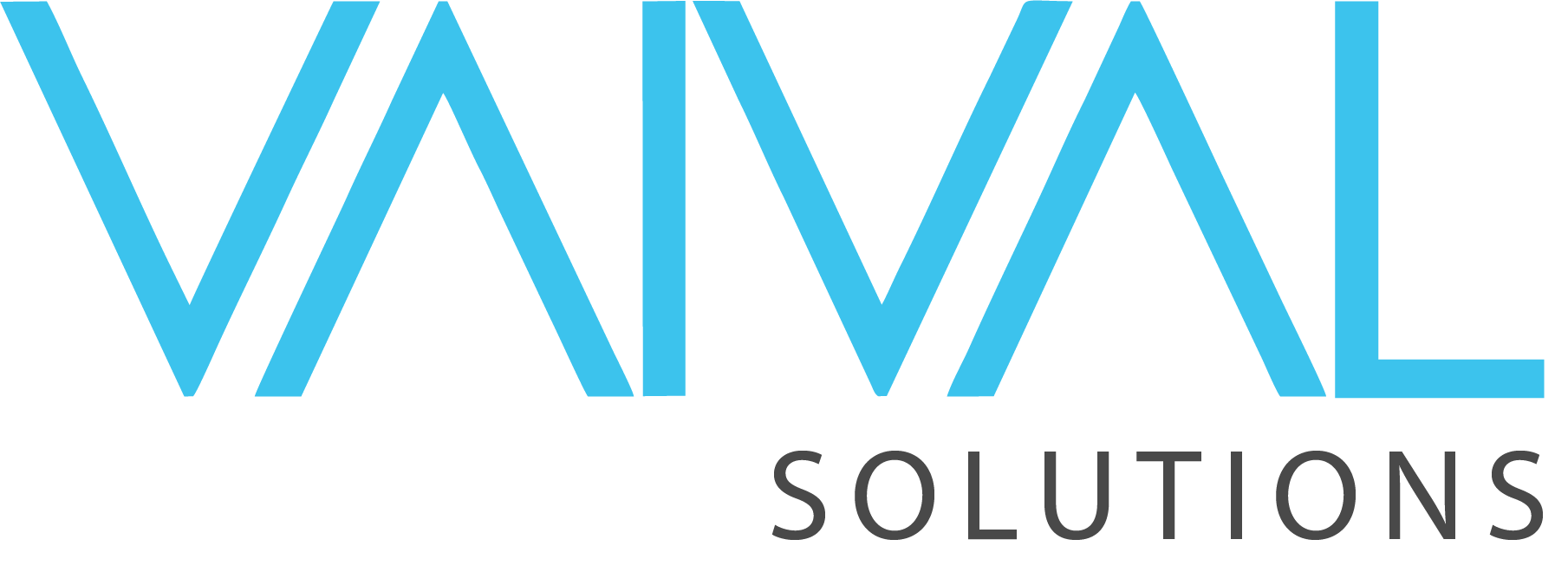- May 3, 2023
- Posted by: Soophia Shahid
- Category: V. Supply Chain Management
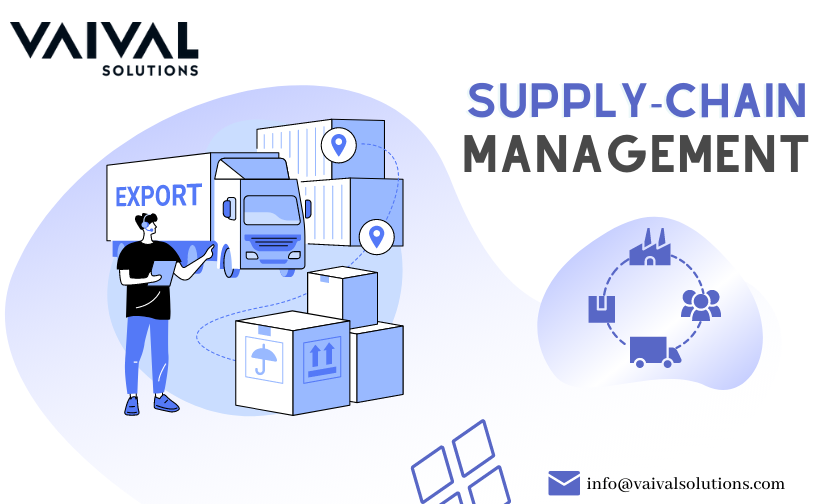
SUPPLY CHAIN MANAGEMENT
The supply chain management module of Vaival Solutions ERP system streamlines the supply chain process for businesses. With this module, businesses can automate and simplify their supply chain operations. It consists of seven main screens, including demand issue, demand receive, stock audit, stock transfer note, stock receive note, stock adjustment, and third-party transfer note. These screens allow businesses to manage demand, track inventory, and transfer stock. The module reduces manual errors and ensures that inventory levels are accurate and up-to-date. Overall, the Vaival Solutions ERP system’s supply chain management module is a powerful tool for businesses to manage their supply chain operations efficiently.
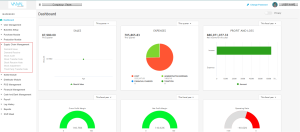
1- Demand Issue:
This screen allows businesses to create and track demand. Users can create new demand issues, track the status of existing demand issues, and edit or delete demand issues as needed. This screen is a multiuser screen, the same screen is used by both, the person generating the demand and the person who will transfer the generated demand. This screen also limits the editing rights of the users and the person generating the demand can edit that demand only and the person who is transferring the demanded stock can change the transfer stock quantity only, they cannot do the other way around. This screen consists of two portions one is for adding the Demand Issue and second is for tracking the demand through Demand Listing.
Figure: Supply Chain Management Module > Add Demand Issue

Figure: Supply Chain Management Module > Demand Listing
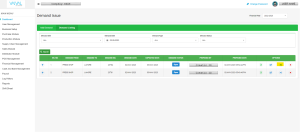
The person who would transfer this demand uses this screen. You have to click on this highlighted button and it will ask you how much stock you want to transfer to this site. After writing the transfer quantity click on “Save”. And this demand will automatically appear in the Demand Receive screen. The status “Open” will also change after you have made the transfer to “Transit”.
Figure: Supply Chain Management Module > Demand Listing Supply Transfer
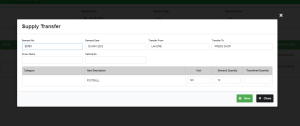
2- Demand Receive:
Once the demand issue is created, and the demand is transferred to the Demand Receive screen. Now this screen allows us to track the receiving of materials or goods against the demand issue. This screen helps businesses keep track of their inventory levels and ensure that they have received the correct items in the right quantities.
Figure: Supply Chain Management Module > Demand Receive
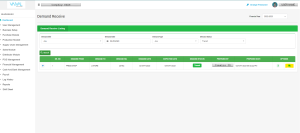
When the party that generated the demand issue receives the ordered quantity, they have to click on the highlighted button. A pop-up will appear showing the issued quantity and how much quantity did you receive. As you add the received and returned quantity, if any, the system changes the “Transit” status to “Closed” in the “Demand Issue” screen. And in the Demand Receive screen the transaction disappears meaning that the stock demanded is received. All this process impacts the stock from one site to another and no financial impact happens in the system from these two screens.
Figure: Supply Chain Management Module > Demand Receive Supply Transfer

Figure: Supply Chain Management Module > Demand Issued Status Closed

3- Stock Audit:
This screen allows businesses to perform periodic stock audits to ensure that the physical inventory matches the inventory recorded in the system. Users can generate stock audit reports, track discrepancies, and update the inventory records accordingly. Our system allows you to enter the data manually here or you could take a print of this sheet in excel format while executing the physical stock take. And you can upload the data by clicking on the “Import Excel” option.
Figure: Supply Chain Management Module > Stock Audit
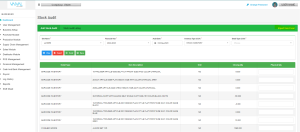
Moreover, you can also use this screen in correlation with the Stock Adjustment screen where you add the losses of your physical stock. That would be further explained below.
This screen has another portion named “Stock Audit Listing”. As you execute the Stock Audit and “Save” it the system that stock actual audit will be shown in this screen. You can also edit and view your stock audit by clicking on the highlighted icons. This screen also does not have a financial impact in the system though it has an impact on the stock quantities.
Figure: Supply Chain Management Module > Stock Audit Listing
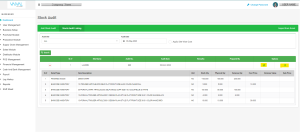
4- Stock Transfer Note:
This screen enables businesses to transfer stock from one location to another within the organization. Users can create new transfer notes, track the status of existing transfer notes, and update the inventory records to reflect the transfer. This screen has financial impact in the system as it asks for the per unit amount of the stock that is to be transferred. This screen has 5 sub tabs:
Figure: Supply Chain Management Module > Stock Transfer Note
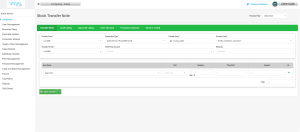
A- Draft Listing
This screen allows you to edit, view, add notes and add attachment from the highlighted icons. You can approve/cancel the stock transfer note that is in draft. You can also choose to view the drafts of a whole financial year from the Financial Year filter. A draft that is canceled is deleted from the system. Approved drafts appear in the Approved Listing as record.
Figure: Supply Chain Management Module > Stock Transfer Note Draft Listing
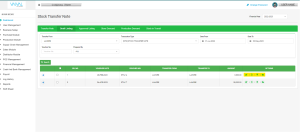
B- Approve Listing:
All the data after approval goes in the approved listing and only this data is going to reflect in Financial Statements.
Figure: Supply Chain Management Module > Stock Transfer Note Approve Listing
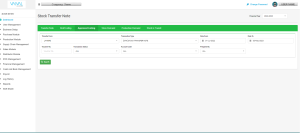
C- Store Demand:
This screen is related to the Demand Issue screen. In the Demand Issue screen you are given the option to select whether the demand is from Store or Production. When you select any of these they reflect in the Stock transfer note Store demand screen. The purpose of this listing is to keep track of the demand issued.
Figure: Supply Chain Management Module > Demand Issue – Store
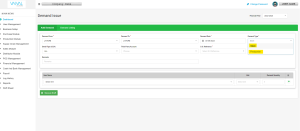
Figure: Supply Chain Management Module > Stock Transfer Note > Store Demand
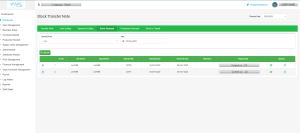
D- Production Demand:
This screen is also related to the Demand Issue screen. In the Demand Issue screen as the figure above, if you choose “Production” the data is going to appear in the stock transfer note “Production Demand” screen. The purpose of this listing is to keep track of the demand issued.
Figure: Supply Chain Management Module > Stock Transfer Note > Production Demand

E– Stock in Transit:
In this screen all the in Transit Stock Transfer notes appear to keep a track of the stock transfer notes.
Figure: Supply Chain Management Module > Stock Transfer Note > Stock in Transit

5- Stock Receive Note:
The stock receive note screen enables businesses to record the receipt of stock from internal & external suppliers. Users can create new receive notes, track the status of existing receive notes, and update the inventory records to reflect the new stock. This screen works in correlation with the above screen as we generate a stock transfer note, against that transfer note we receive the stock from this voucher. This screen has a financial impact in the system as it asks for the amount of the stock that is received.
Figure: Supply Chain Management Module > Stock Receive Note
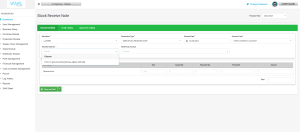
A- Draft Listing
This screen allows you to edit, view, add notes and add attachment from the highlighted icons. You can approve/cancel the stock receive note that is in draft. You can also choose to view the drafts of a whole financial year from the Financial Year filter. A draft that is canceled is deleted from the system. Approved drafts appear in the Approved Listing as record.
Figure: Supply Chain Management Module > Stock Receive Note > Draft Listing
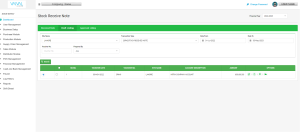
B- Approve Listing:
All the data after approval goes in the approved listing and only this data is going to reflect in Financial Statements.
Figure: Supply Chain Management Module > Stock Receive Note > Approve Listing
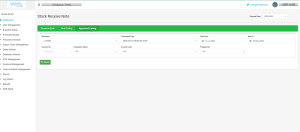
6- Stock Adjustment:
The stock adjustment screen allows businesses to adjust their inventory levels to account for any discrepancies or errors in the system. This screen can also be used if the inventory type that is used by your business incurs natural loss or gain e.g. during the moment of stock from one site to another etc. Users can create new adjustments, track the status of existing adjustments, and update the inventory records accordingly.
Figure: Supply Chain Management Module > Stock Adjustment
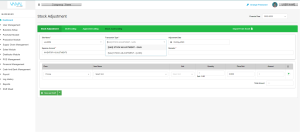
A- Draft Listing
This screen allows you to edit, view, add notes and add attachment from the highlighted icons. You can approve/cancel the stock adjustment that is in draft. You can also choose to view the drafts of a whole financial year from the Financial Year filter. A draft that is canceled is deleted from the system. Approved drafts appear in the Approved Listing as record.
Figure: Supply Chain Management Module > Stock Adjustment > Draft Listing

B- Approve Listing:
All the data after approval goes in the approved listing and only this data is going to reflect in Financial Statements.
Figure: Supply Chain Management Module > Stock Adjustment > Approve Listing

7- Third Party Transfer Note:
Third-party transfer note screen enables businesses to transfer stock to or from third-party organizations. Users can create new transfer notes, track the status of existing transfer notes, and update the inventory records to reflect the transfer.
Figure: Supply Chain Management Module > Third Party Transfer Note

A- Draft Listing
This screen allows you to edit, view, add notes and add attachment from the highlighted icons. You can approve/cancel the third party transfer note that is in draft. You can also choose to view the drafts of a whole financial year from the Financial Year filter. A draft that is canceled is deleted from the system. Approved drafts appear in the Approved Listing as record.
Figure: Supply Chain Management Module > Third Party Transfer Note > Draft Listing
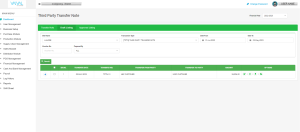
B- Approve Listing:
All the data after approval goes in the approved listing and only this data is going to reflect in Financial Statements.
Figure: Supply Chain Management Module > Third Party Transfer Note > Approve Listing

Table of Contents
